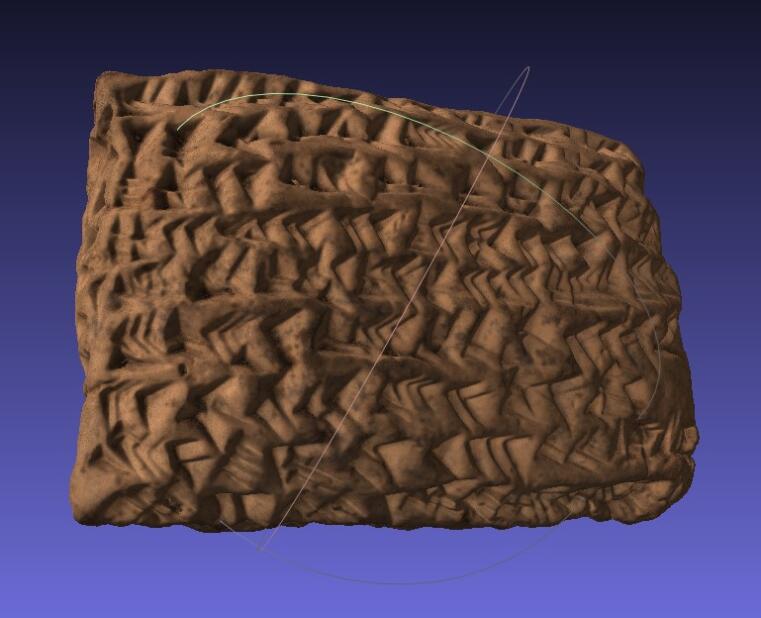3D Scanning
In addition to RTI, GoviB also uses 3D scanning of tablets for research and documentation. Tablets inscribed over the edges are scanned using a stripe light scanner provided by ZEDIKUM of the Staatliche Museen - Stiftung Preußischer Kulturbesitz. The tablets are scanned by a student assistant, and afterwards reworked by Fanet Göttlich (ZEDIKUM).

The downside of 3D scanning is the huge amount of data created in the process, especially when tablets are large and badly preserved. Furthermore, the 3D scans have a lower resolution compared to the RTIs we use and the image is not photo-realistic. This is why a combination of both datasets works best for GoviB's goals - high-resolution photography allows for identifying minute traces of signs of broken tablets and 3D scans allow for an examination of writing that extends over the edges, an indispensable tool when working with three-dimensional objects such as cuneiform tablets. Both types of documentation will be openly accessible for further research once GoviB's editorial work on the texts is published.

